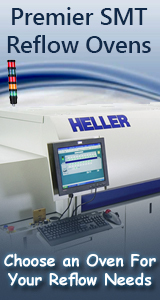Printed Circuit Board Assembly & PCB Design Forum
SMT electronics assembly manufacturing forum.
- SMTnet
- »
- Electronics Forum
- »
- HASL surface finish
HASL surface finish
Views: 3892
![]() Has anyone had an issue with changing from a HASL surface fi...
- Jun 12, 2020
by
SMTA-Josh
Has anyone had an issue with changing from a HASL surface fi...
- Jun 12, 2020
by
SMTA-Josh
![]()
![]() SMTA
SMTA
![]()
![]() We did a batch of boards with lead free HASL that we thought...
- Jun 14, 2020
by
kyleh04
We did a batch of boards with lead free HASL that we thought...
- Jun 14, 2020
by
kyleh04
![]()
![]()
![]() You may find some wetting issues running LF HASL with 63/37,...
- Jun 15, 2020
by
robgd3
You may find some wetting issues running LF HASL with 63/37,...
- Jun 15, 2020
by
robgd3
![]()
![]()
![]() Tin/Lead has 183C melting point and probably around 220 peak...
- Jun 15, 2020
by
Evtimov
Tin/Lead has 183C melting point and probably around 220 peak...
- Jun 15, 2020
by
Evtimov
![]()
![]()
![]() Try sending your boards to rework before SMT and have them r...
- Jun 15, 2020
by
Travis H
Try sending your boards to rework before SMT and have them r...
- Jun 15, 2020
by
Travis H
![]()
![]()
![]() for the fiducials, try a donut shape instead of a disc. The ...
- Jun 16, 2020
by
DWL
for the fiducials, try a donut shape instead of a disc. The ...
- Jun 16, 2020
by
DWL
![]()
![]()
![]() Hi. Taking this from a total different angle - why not use E...
- Jun 24, 2020
by
kumarb
Hi. Taking this from a total different angle - why not use E...
- Jun 24, 2020
by
kumarb
![]()
- SMTnet
- »
- Electronics Forum
- »
- HASL surface finish







